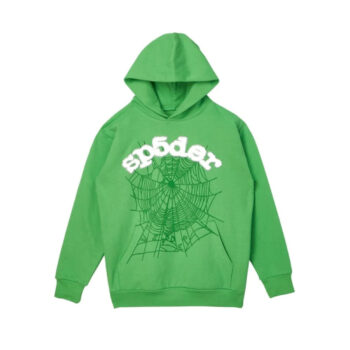Exploring the Power of Visual Communication Design
Visual Communication Design is a multifaceted and ever-evolving field that plays a pivotal role in our modern world. It encompasses a wide range of mediums, from graphic design and web design to animation and photography, all with the common goal of conveying messages, ideas, and information through visual elements. In this article, we will delve into the intricacies of Visual Communication Design, its significance in various industries, and its impact on our daily lives.
The Fundamentals of Visual Communication Design
Visual Elements: Visual Communication Design relies on fundamental visual elements, such as color, typography, imagery, shape, and space.wellhealth how to build muscle tag These elements are the building blocks for creating effective and engaging designs.
. It involves principles like balance, hierarchy, contrast, and alignment. A well-composed design ensures that the message is presented in an aesthetically pleasing and organized manner.
Typography: Typography is a crucial aspect of visual communication. The choice of fonts, sizes, and spacing can significantly influence how a message is perceived. Different typefaces can convey different emotions and cater to diverse target audiences.
Color Theory: Colors have the power to evoke emotions, create visual interest, and convey meaning. Designers use color theory to select and combine colors in a way that aligns with the message and the brand’s identity.
Imagery: Images and graphics are often at the forefront of visual communication. The choice of visuals, their quality, and how they are integrated into a design are vital for conveying the intended message.
Applications of Visual Communication Design
Graphic Design: Graphic design is one of the most prominent applications of Visual Communication Design. It involves creating visual content for various mediums, including advertisements, posters, logos, and branding materials.
Web Design: Web design is about creating aesthetically pleasing and functional websites. It involves layout design, user interfacehealthy life wellhealthorganic elements, and the organization of content for an optimal user experience.
Advertising and Marketing: Visual Communication Design plays a critical role in advertising and marketing campaigns. Compelling visuals are used to grab the audience’s attention, communicate the value of a product or service, and establish brand identity.
User Experience (UX) and User Interface (UI) Design: UX and UI design are integral to digital products and services. Visual Communication Design ensures that the user experience is intuitive and visually appealing, guiding users through digital interfaces with ease.
Motion Graphics and Animation: Motion graphics and animation are employed in various media, from television and film to websites and mobile apps. These dynamic visual elements enhance storytelling and engagement.
Photography: Photography is a form of visual communication that captures moments, emotions, and narratives through images. Photographers use composition, lighting, and post-processing techniques to convey their intended message.
Significance in Various Industries
Corporate Branding: Visual Communication Design is central to corporate branding. A well-designed logo, a consistent color palette, and a clear visual identity help companies establish their image and create recognition in the market.
Education: In education, visual communication is essential for creating engaging learning materials. Infographics, presentations, and interactive media are used to facilitate understanding and retention of information.
Journalism and Media: News outlets rely on effective visual communication to convey complex stories and data. Infographics, charts, and illustrations aid in presenting information in a digestible format.
Healthcare: Visual communication is utilized in healthcare to simplify medical information for patients. Visual aids, diagrams, and illustrations help patients better understand their conditions and treatment options.
Entertainment and Arts: In the world of entertainment and arts, Visual Communication Design takes center stage in film, television, video games, and the visual arts. It sets the tone, communicates narratives, and captivates audiences.
Impact on Daily Life
Visual Communication Design is all around us, influencing our perceptions, decisions, and interactions. From the branding of the products we use to the websites we visit and the advertisements we encounter, it shapes our daily experiences. Here are some ways it impacts our lives:
Advertising and Consumer Choices: Visual communication design in advertising affects our purchasing decisions. Well-designed advertisements and packaging can influence what products we choose.
Information Accessibility: Visual communication makes complex information more accessible. Infographics, data visualizations, and diagrams help us understand data and statistics quickly and easily.
User-Friendly Interfaces: The websites and apps we interact with daily rely on effective UX and UI design. A well-designed interface enhances our user experience, making it smooth and enjoyable.
Storytelling and Entertainment: Visual communication design is the backbone of storytelling in entertainment. Movies, video games, and even social media platforms leverage visual elements to captivate and engage us.
Conclusion
Visual Communication Design is a dynamic field with a profound impact on our lives. It combines art and technology to convey messages, evoke emotions, and influence our perceptions. Whether it’s through graphic design, web design, advertising, or any other medium, it plays a critical role in shaping our world and how we interact with it. As technology continues to advance, Visual Communication Design will only grow in significance, continuing to drive innovation and creativity across various industries.
The Fundamentals of Visual Communication Design
Visual Elements: Visual Communication Design relies on fundamental visual elements, such as color, typography, imagery, shape, and space. These elements are the building blocks for creating effective and engaging designs.
Composition: Composition is the arrangement of visual elements within a design. It involves principles like balance, hierarchy, contrast, and alignment. A well-composed design ensures that the message is presented in an aesthetically pleasing and organized manner.
Typography: Typography is a crucial aspect of visual communication. The choice of fonts, sizes, and spacing can significantly influence how a message is perceived. Different typefaces can convey different emotions and cater to diverse target audiences.
Color Theory: Colors have the power to evoke emotions, create visual interest, and convey meaning. Designers use color theory to select and combine colors in a way that aligns with the message and the brand’s identity.
Imagery: Images and graphics are often at the forefront of visual communication. The choice of visuals, their quality, and how th







